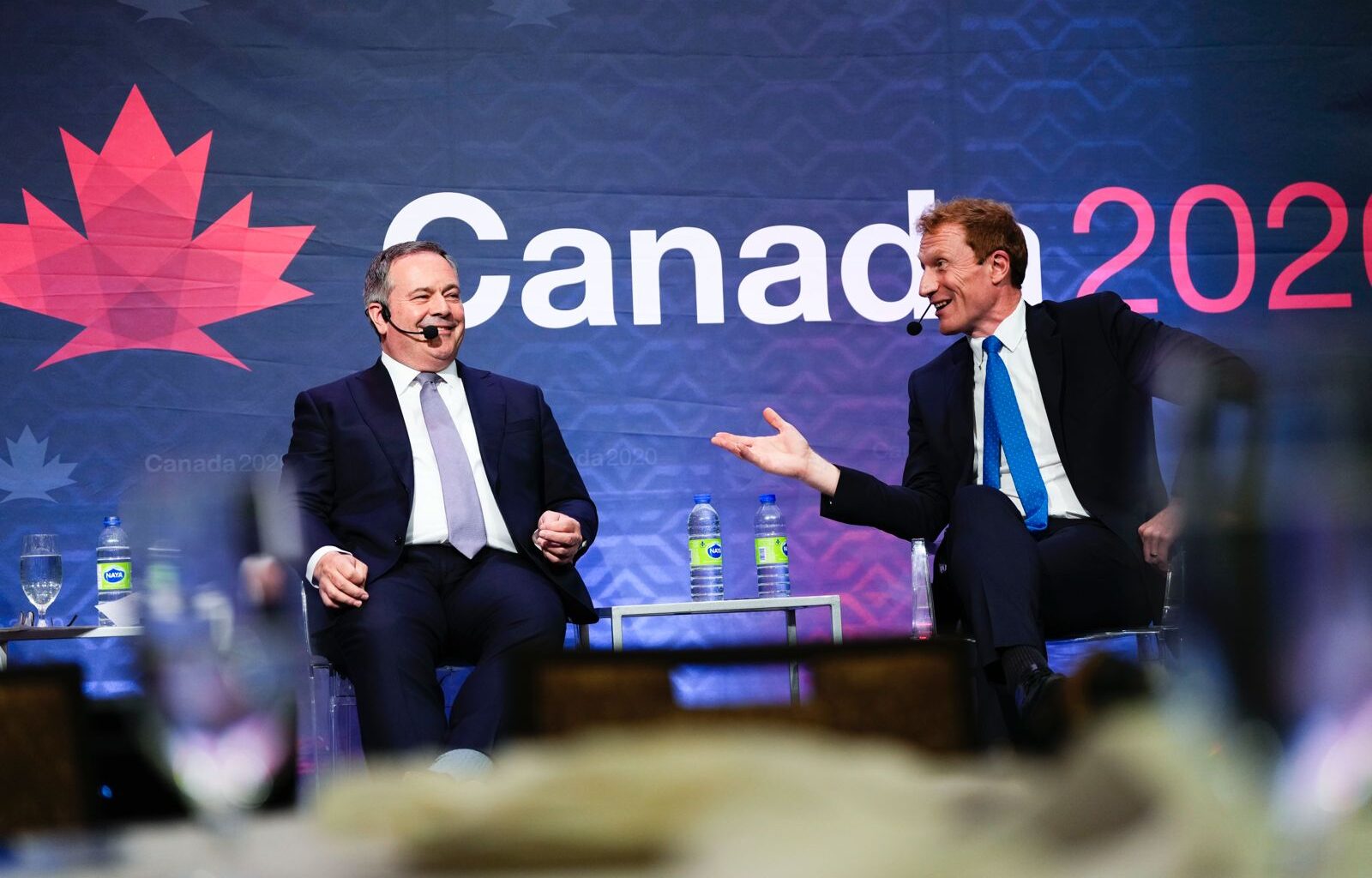Read: 4 min
Two former immigration ministers — one Liberal, one Conservative — were in agreement about the failings of Canada’s immigration system at a recent policy forum.
At a Sept. 23 Canada 2020 event, Marc Miller and Jason Kenney both said Canada should keep immigration at the heart of its economic strategy. But both also said Canada needs to take major steps to fix the system before public confidence frays further.
“We’ve always seen immigration as a key lever to increase human capital,” said Kenney, who served as immigration minister for five years during the Harper government and later served as premier of Alberta.
“Unfortunately, we now have a system that does almost the opposite. And that is what the public is picking up on in those polling numbers.”
These polling numbers show 58 per cent of Canadians now think the country accepts “too many immigrants,” panel moderator and former deputy prime minister Anne McLellan told the audience. This is up 14 points since 2023.
“I think the speed of that change has to tell you something,” she said.
Miller, who oversaw the immigration portfolio from 2023 until March 2025 and remains a sitting MP, agreed the system had experienced “overheating” in recent years, especially in non-permanent immigration streams.
Statistics Canada estimates there were nearly three million non-permanent residents in the country in April, representing 7.1 per cent of the population. This is up from about 1.5 per cent of the population in 2016.
Miller acknowledged that the student visa system in particular drifted from its original purpose during the Trudeau years.
“At some point along the road, we started tacking on all these advantages that made [the student immigration stream] look more like a back-way entry into Canada, as opposed to bringing in the best and brightest [who] then go home and make their own countries shine,” he said. He noted as examples the decisions to lift a 20-hour-per-week cap on student work and to permit graduates to work up to three years in Canada.
One of the effects of these changes, Kenney noted, was the rise of “dodgy diploma mills” and exploitative immigration consultants.
“What happened was in Ontario [and] B.C. in particular, these listed community colleges wanted to increase their [student] volume. But the way they did that was to sign these [Memorandums of Understanding] with these dodgy diploma mills.
“And through that, those kids got access to the work permit, which is why they come to Canada and pay the immigration recruitment agents obscene amounts of money to access Canada.”
In 2024, Ottawa responded by capping the number of new study permits, among other changes. That cap, which cut 2024 permits by 35 per cent from 2023 levels, has hurt legitimate universities, Kenney said.
“Why is the University of Alberta or McGill being [made to] suffer as a result by constraining the overall access to visas for students going to first-tier degree-granting institutions?” he said. “It doesn’t make sense.”
“When I was minister, we required provinces to submit a list of credible post-secondary institutions who would be eligible to invite people to come as foreign students.”
Kenney also expressed frustration at the lack of repercussions for postsecondary administrations that admitted unsustainably high volumes of foreign students.
“Why has nobody been held accountable?” he asked.
‘Too obsessed’
Another immigration stream that some claim has been abused is the Temporary Foreign Worker Program, which many companies use to bring in low-skilled foreign workers. Conservative Leader Pierre Poilievre recently made headlines by pledging to scrap the program.
Kenney noted that MPs and provincial legislators often come under significant pressure from local employers — “the local Tim Hortons franchisee” — to help them turn low-wage TFW workers into permanent residents.
“[But] that is not how you end up with a wealth creating, world class, high human capital immigration system,” he said.
Miller did not dispute this pattern, but cautioned against being “too obsessed” by snapshots of GDP per capita and how they impact productivity. He noted younger immigrant cohorts typically earn less early in their careers and catch up over time.
But low-skilled workers are not the “model immigrant” that Canada needs to create wealth and drive innovation, Kenney said. He urged Ottawa to return to stricter permanent residency selection criteria for economic immigrants that favour official-language proficiency and demonstrated earnings potential.
Stricter enforcement
Both former immigration ministers also stressed the need for better enforcement of immigration rules.
“[Canada Border Services Agency] is removing 13,000 people a year who’ve overstayed,” Kenney said. “We have something like 3.5, 3.8 million non-permanent residents. We do not know how many are out of status.
“On top of that … There’s huge pressure from that population of 3.5 million non-permanent residents to get permanent residency.”
Miller suggested Canada could explore introducing financial incentives to get temporary residents to leave, noting removing immigrants by force is costly.
“It’s extremely expensive to force people to leave, and there are incentives to make sure people do go home.” He cited as one idea returning temporary residents’ pension contributions to them when they leave.
But he also acknowledged the need for “an efficient immigration system … [that has] an effective removal system for those people that refuse to leave.”
“Most people are fine with immigration,” the former Liberal immigration minister said. “They don’t like the fact the system has gotten out of control in some areas … they expect the federal government to exert control in a fair and firm way.
“And we can do that as a country, whether you’re some iteration of conservative, whatever the party involved, you can do this in a way that is not divisive.”
Related Posts

